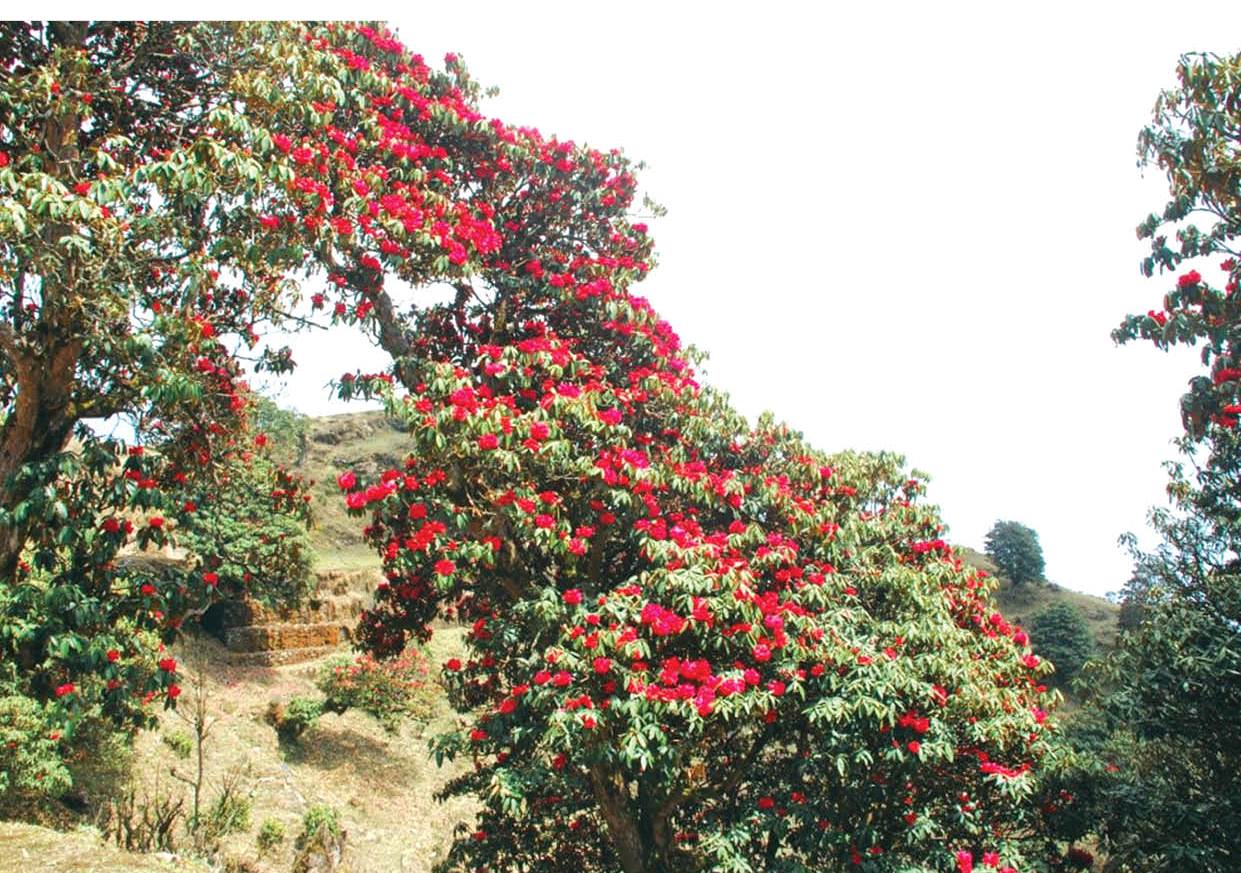Top five eco-tourist destinations of State 1

Birat Anupam
Because of visible problems induced by climate change and global warming, international conscious travellers are increasingly focussed to reduce or cease their carbon footprints. They are curious to be responsible tourists for nature.
For this, eco destinations are in their top priority. So far as eco destinations are concerned, Nepal is primarily popularised by Chitwan National Park. However, there are many other attractive world-class virgin eco destinations from southern plains to the Himalayan region.
East Nepal is famed for its amazing natural destinations. Nature lovers from around the world are drawn to this part of the country because of many preferred eco-tourism destinations. Here are top five world-class eco-tourism destinations of east Nepal.
Koshi Tappu Wildlife Reserve
Known as the best bird gallery in South Asia, Koshi Tappu, situated in southern plains of State 1, is also famous destination of migratory birds from Asia and Europe, especially during February and March. This reserve comprises extensive mudflats, reed beds and freshwater marshes in the floodplain of the Saptakoshi River, which is Nepal's largest river originating from China and reaching down to India. With an area of 175 square kilometres, this destination includes dolphin sighting, elephant ride, rare wild buffaloes and indigenous Tharu culture in its vicinities. The reserve covers three districts-- Sunsari, Saptari and Udayapur.
One can get to this beautiful reserve within a few minutes from the East-West Highway.
Makalu Barun National Park
Officially established in 1992, this national park under the canopy of the world's fifth largest peak Mt. Makalu (8,485m) and world's deepest valley named Arun Valley is a premium eco destination in the country.
It is adjacent to the world's highest national park, Sagarmatha National Park. This park covers an area of 1500 square kilometres in Sankhuwasabha and Solukhumbu districts.
It is also famous for being the world's only protected area that encompasses tropical forests to towering snow-capped peak above 8,000 metres.
The rugged summits of Mt. Chamlang, Mt. Baruntse, Mera Peak and Mt. Makalu are parts of this park. The variation in altitude ranges from 334-377 metres in the Arun River basin in the southeast and a gain of 8,000 plus metres at the summit of Makalu.
The protected area shares the international border with China's Chomolungma Nature Reserve to the north, about 66-km east-west and 44-km south to north.
The national park is part of the Sacred Himalayan Landscape. It is reached via Tumlintar airport of Sankhuwasabha district.
Sagarmatha National Park
Covering an area of 1148 square kilometres, Sagarmatha National Park is located in Solukhumbu district. The park has amazing variation in elevation ranging from 2850 metres to 8848 metres at the summit of Mt. Everest. The protected area also shares the international border with China's Chomolungma Nature Reserve to the north. One can get to this park by air connecting Solukhumbu either from Kathmandu or from Manthali of Ramechhap.
Kanchenjunga Conservation Area
Sandwiched between two Asian giant nations-- China and India, this is the only conservation area connecting China and India. Situated under the world's third tallest peak of Mt. Kanchenjunga (8,586 metres), this region is popular for its alpine grasslands, rocky outcrops, and low river valleys, temperate and sub-tropical forests. Located in Taplejung district, the protected area shares borders with the Tibet Autonomous Region of China. The area has been selected as one of the 200 Global Eco Regions as recognised by World Wildlife Fund for its rare floras and faunas. It is reached from Suketar airport or from Mechi Highway.
TMJ
The abbreviation of Tinjure, Milke and Jaljale (TMJ) is home to 28 species of rhododendrons. Situated in between Tehrathum, Sankhuwasabha and Taplejung districts, a short hike to this place offers feelings of both hills and Himalayas. Guphapokhari area of TMJ is famous for biodiversity. Like, Menchchyayem hilltop is another big attraction of this area. This hilltop is culturally famous for indigenous local Limbu communities. Their sacred book named 'Yakthung Mundhum' describes Menchchyayem hilltop as a cultural and historical place of the Limbu ethnic community.
Recent News

Do not make expressions casting dout on election: EC
14 Apr, 2022
CM Bhatta says may New Year 2079 BS inspire positive thinking
14 Apr, 2022
Three new cases, 44 recoveries in 24 hours
14 Apr, 2022
689 climbers of 84 teams so far acquire permits for climbing various peaks this spring season
14 Apr, 2022
How the rising cost of living crisis is impacting Nepal
14 Apr, 2022
US military confirms an interstellar meteor collided with Earth
14 Apr, 2022
Valneva Covid vaccine approved for use in UK
14 Apr, 2022
Chair Prachanda highlights need of unity among Maoist, Communist forces
14 Apr, 2022
Ranbir Kapoor and Alia Bhatt: Bollywood toasts star couple on wedding
14 Apr, 2022
President Bhandari confers decorations (Photo Feature)
14 Apr, 2022











